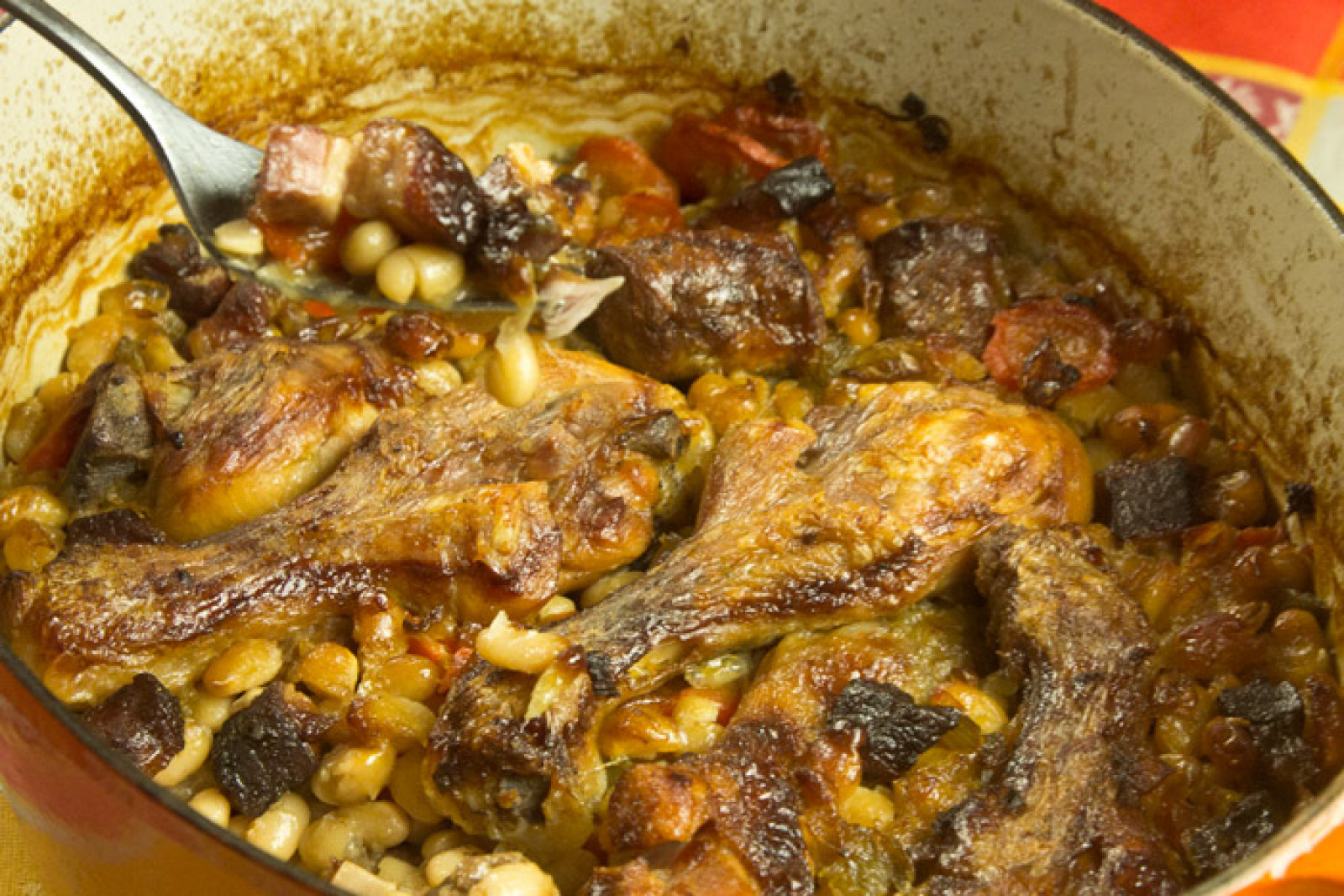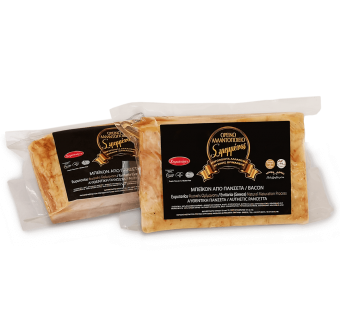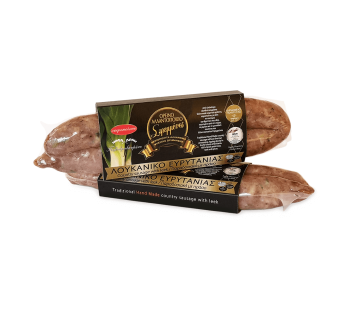

SUGGESTS YOU TRY
The general idea of Cassoulet is to mix beans with pieces of meat that can be preserved in the winter, such as pork sausage, bacon and some poultry leg in the form of confi (often duck or goose), which are cooked slowly in broth for hours, creating a delicious crust on the upper surface of the plate.
Quite a laborious recipe, especially in the initial stage of sautéing, in the sense that you have to be on top of the stove for a long time to gradually sauté the 3 meats (bacon, sausage and chicken), but otherwise not difficult. We are talking a total of 5 hours, but of these you will be involved for about an hour. The utensil that accompanies the food from the first sautéing to the slow finish in the oven is pretty basic and would traditionally be ceramic. However, ceramic pots are a problem with cooking hobs because among other things they can break if not heated gradually. So the ideal solution would be a cast iron enamel coated pot or a pan.
Many thanks to Cucina di Caruso!
- 400 gr. beans
- 350 gr. handmade Evrytania sausage with leek Stremmenos, cut into large pieces
- 250 gr. whole smoked bacon Stremmenos, diced
- 6 chicken legs with their skin
- 1 large carrot in slices
- 2 sliced celery sprigs
- 1 large onion, finely chopped
- 1 head whole garlic, with its peels
- 3 bay leaves
- 5 carnation flowers
- 20 gr. gelatin in leaves
- 1.5 liters of chicken broth (2 tablespoons in 1.5 liters of hot water)
- Optional: 20-30 gr. stale bread crumbs
Preparation
- Cut the vegetables (chopped onion, celery and carrot into slices).
- Prepare 1.5 liters of chicken broth and pour in the gelatin, stirring to dissolve when lukewarm.
- Cut the sausages into 3-4 cm pieces and the bacon into 1 cm cubes.
Saute the three meats in succession
- Use a traditional French cast iron hull with an enamel coating or a pan that goes in the oven. Place it on the stove on medium to high volume (7/9).
- You start the sautéing from the bacon, which you add without oil or fat, because in the process it will produce its own, on which the other ingredients will be sautéed. So keep the bacon stirring every now and then for about 15 '-18' until almost all the fat is liquefied and the bacon remains crisp with a deep golden-brown color.
- Remove the bacon to a bowl and add the sausages to the fat. Let them liquefy a little of their fat and take on color for about 12-14 minutes and then also remove them to the bowl.
- Finally do the same job with the chicken legs. It will take about 8 minutes on each side for their skin to take on color and begin to take on a crunchy texture. You also remove them but to a different bowl.
- Your last job, if you want the food to be a little lighter, is to remove about half of the accumulated fat and throw it away. The rest is enough for the continuation of the process.
Saute the vegetables & boil the beans
- In the pan with a little fat in it, add the spices (bay leaf and cloves) and the three vegetables and sauté them for 5-7 minutes to get color. Then add the whole garlic and add the beans, strained from the soaking water.
- Finally, add 1 liter of the broth that contains gelatin. Be careful not to add too much salt to the food, as there will be plenty of bacon. If you want, add a little pepper. Bring the beans to a boil and reduce the heat to low, close the lid and let the beans boil and soften for the next 45 '.
- Just before the 45' are up, preheat your oven to 150°C.
Slowly cook the cassoulet in the oven
Remove the lid of the pan and remove the laurels and cloves from inside, if you can find them. Then add the bacon and sausage. Finally, on top add the chicken legs with the side that has the most skin facing upwards. Add a little of the remaining half liter of broth and place it - without the lid - in the oven at 150°C heated top and bottom.
After 2 to 2:30 hours check the food and top up with the remaining broth. Your goal is to create a beautiful delicious crust not only on top of the chicken legs but also on top of the rest of the food, which is already cooked at this stage, but we keep it in the oven to give it that feeling of being slowly cooked. traditionally in a wood stove or wood oven. At this point, if you want, sprinkle with stale bread crumbs to help create the crust.
So in the last half hour you can turn the heating of the oven to air grill or something similar if your oven does not have such a function. Raise the temperature to 160° -170°C and wait until the top of the food is slightly "burnt", so that the gelatin and the fat caramelizes to give you the crunch that this particular recipe calls for. If the crust appears earlier, it is good to break it a little with a spoon and add a little liquid from below, so that it gradually increases.
If you see somewhere along the way that the food needs liquids, add a little hot water, but keep in mind that the end result should not be soup, but rather a quite thick composition of ingredients.
Serving
Always serve such traditional recipes that have melted in the oven, from the pot placed at the center of the table, to the dishes, having allowed 15 minutes for the temperatures to calm down and the flavors to balance. Note that the dish tastes better the next day and because of course it is a heavy, winter dish, it is recommended for a Sunday lunch.

